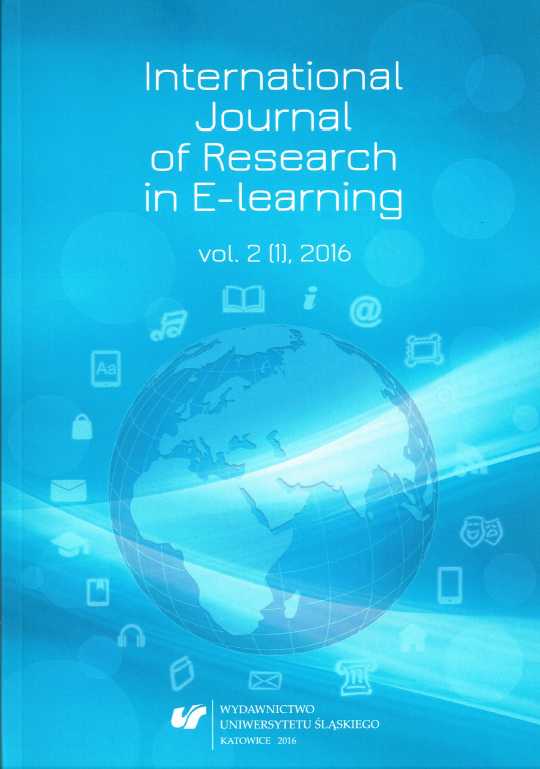Beckmann, J., Bertel, S., & Zander, S. (2015). Performance & emotion – a study on adaptive e-learning based on visual/verbal learning styles. In Proceedings from the International Association for Development of the Information Society (IADIS): International Conference on e-Learning (pp. 27–34). Accessed 4 June 2016. Retrieved from https://eric.ed.gov/?id=ED562095.
Boyd, G. M. (2004). Conversation theory. In Jonassen, D. H. (Ed.), Handbook of research on educational communications and technology. Second edition (pp. 179–197). Mahwah, New Jersey: Lawrence Erlbaum.
Chang, Y.-H., Chen, Y.-Y., Chen, N.-Sh., Lu, Y.-T., & Fang, R.-I. (2016). Yet another adaptive learning management system based on Felder and Silverman’s learning styles and mashup. Eurasia Journal of Mathematics, Science & Technology Education, 12(5), 1273–1285. doi: 10.12973/ eurasia.2016.1512a.
Chen, C. H., & Chang, S. W. (2015). Effectiveness of adaptive assessment versus learner control in a multimedia learning system. Journal of Educational Multimedia and Hypermedia, 24(4), 321–341.
Czeczotková, B., & Prextová, T. (2014). Creation of study materials for adaptive learning. Journal of Technology and Information Education, 6(1), 57–70.
Dream Box Learning. What Works Clearinghouse intervention report. (2013). Accessed 9 June 2016. Retrieved from https://eric.ed.gov/?q=adaptive+instruction+&pg=2&id=ED544506.
Gagné, R. M. (1975). Learning Conditions. Prague: SPN.
Huang, S.-L., & Shiu, J.-H. (2012). A user-centric adaptive learning system for e-learning 2.0. Educational Technology & Society, 15(3), 214–225.
Identifying and understanding pragmatic trends in the application of technology to improve learning. IMS Global Learning Consortium. (2015). Retrieved from https://www.imsglobal.org/event/2016- learning-impact-leadership-institute.
Ikwumelu, S. N., Oyibe, O. A., & Oketa, E. C. (2015). Adaptive teaching: An invaluable pedagogic practice in social studies education. Journal of Education and Practice, 6(33), 140–144.
Key findings report. Dreambox Learning achievement growth. (2016). Harvard University. Accessed 9 June 2016. Retrieved from http://cepr.harvard.edu/dreambox-learning-achievement-growth.
Kolb, D. A. (1984). Experiential learning: Experience as a source of learning and development. New Jersey: Englewood Cliffs.
Kostolányová, K. (2012). The theory of adaptive e-learning. Ostrava: University of Ostrava.
Learning impact report: E-texts and adaptive learning leading the way to an emerging world of educational apps. (2013). IMS Global Learning Consortium. Accessed 9 June 2016. Retrieved from http://www.imsglobal.org/sites/default/files/LIA/LIA2013Report.pdf.
Learning to adapt. The evolution of adaptive learning in higher education. (2016). Tyton Partners. Accessed 15 June 2016. Retrieved from http://tytonpartners.com/library/learning-to-adapt-2-0- the-evolution-of-adaptive-learning-in-higher-education/.
Leveraging intelligent adaptive learning to personalize education. (2011). Dreambox Learning. Accessed 15 June 2016. Retrieved from http://www.dreambox.com/white-papers/leveraging- intelligent-adaptive-learning-to-personalize-education.
Mareš, J. (1998). Pupils’ learning styles. Prague: Portál
Mödritscher, F., V. M. Garcia-Barrios, & C. G̈ utl. (2004). The past, the present and the future of adaptive e-learning: An approach within the scope of the research project AdeLE. In Proceedings from the International Conference on Interactive Computer Aided Learning.
Murray, M. C., & Pérez, J. (2015). Informing and performing: A study comparing adaptive learning to traditional learning. Informing Science: the International Journal of an Emerging Transdiscipline, 18, 111–125. Accessed 15 June 2016. Retrieved from http://www.inform.nu/ Articles/Vol18/ISJv18p111-125Murray1572.pdf.
NMC Horizon report: 2016 higher education edition. Accessed 9 June 2016. Retrieved from http:// www.nmc.org/publication/nmc-horizon-report-2016-higher-education-edition/.
Somyürek, S. (2015). The new trends in Adaptive Educational Hypermedia Systems. International Review of Research in Open and Distributed Learning, 16(1), 221–241.
Surjono, H. D. (2015). The effects of multimedia and learning style on student achievement in online electronics course. TOJET: The Turkish Online Journal of Educational Technology, 14(1), 116–121.
Šarmanová, J. et al. (2011). Methodology for the creation of personalized e-learning study materials. Ostrava: VŠB-TU.
van Seters, J. R., Ossevoort, M. A., Tramper, J., & Goedhart, M. J. (2012). The influence of the student characteristics on the use of adaptive e-learning materials. Computers & Education, 58(3), 942–952.
Verdú, E., Regueras, L. M., Verdú, M. L., De Castro, J. P., & Pérez, M. A. (2008). An analysis of the research on adaptive learning: The next generation of e-learning. WSEAS TRANSACTIONS on Information science & applications, 6(5).
WWC intervention report What Works Clearinghouse. (2013). U.S. Department of Education. Accessed 4 June 2016. Retrieved from http://ies.ed.gov/ncee/wwc/Protocols.
Yang, T.-C., Hwang, G.-J., & Yang, S. J.-H. (2013). Development of an adaptive learning system with multiple perspectives based on students’ learning styles and cognitive styles. Educational Technology & Society, 16(4), 185–200.
Google Scholar


